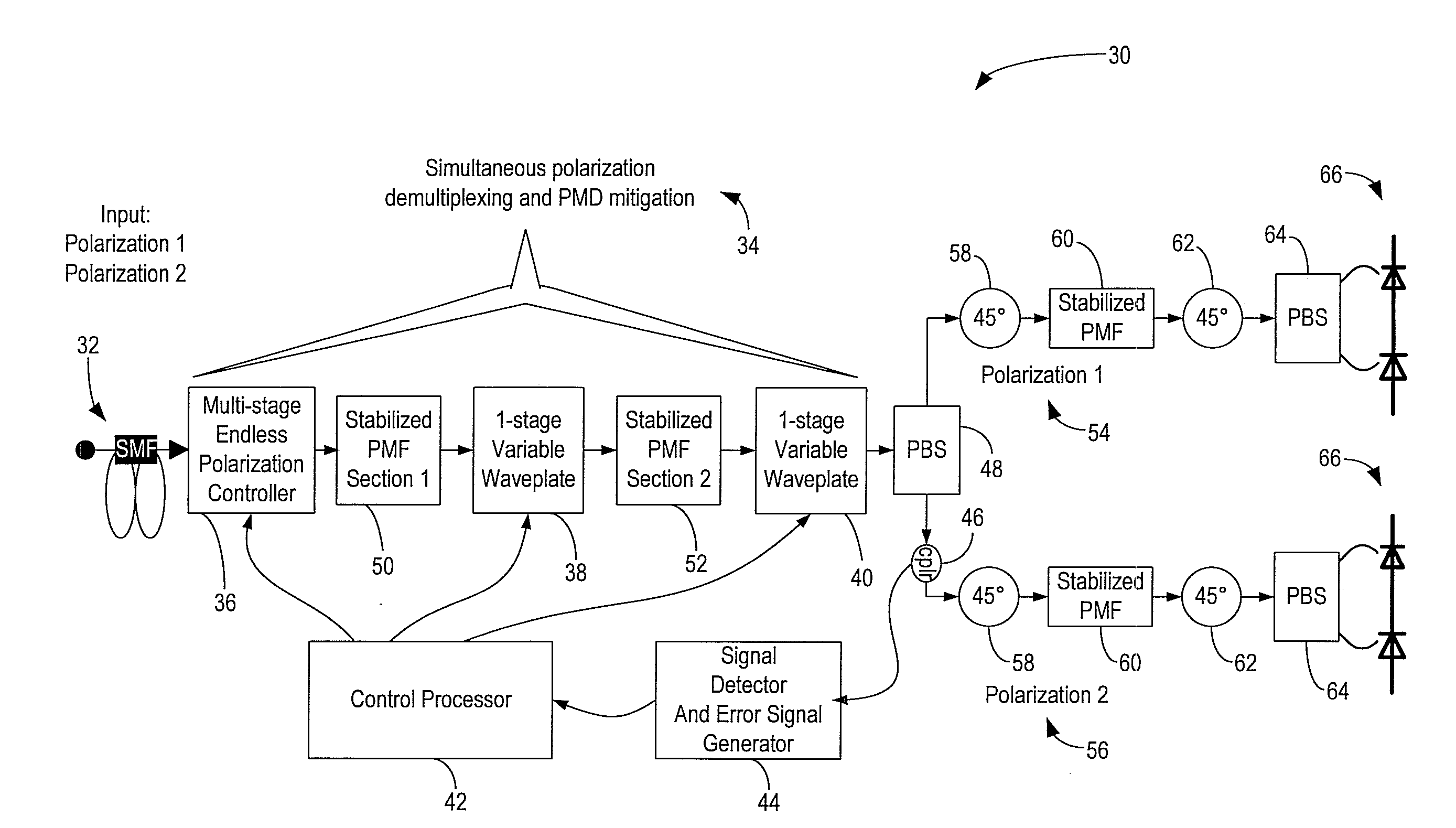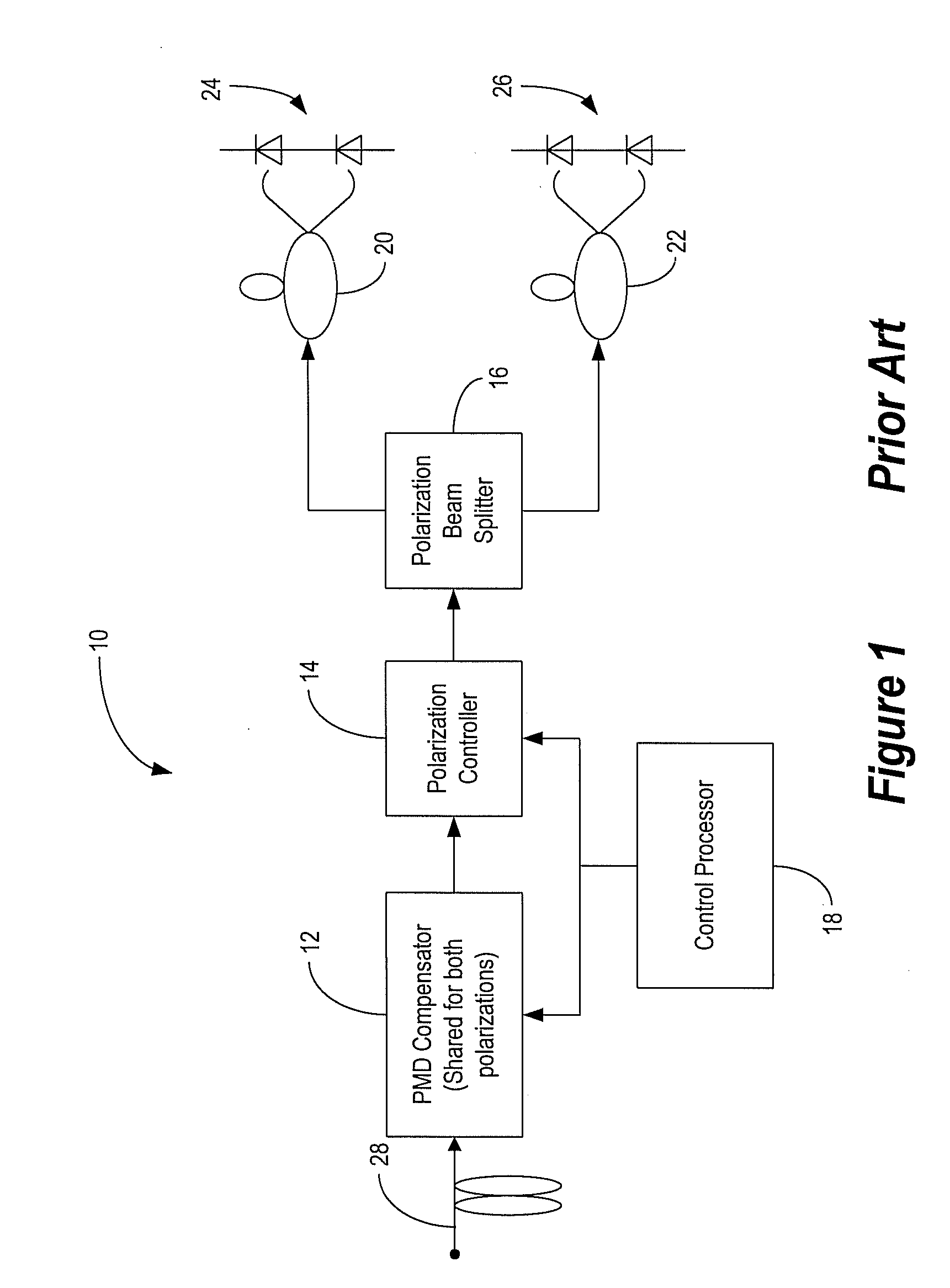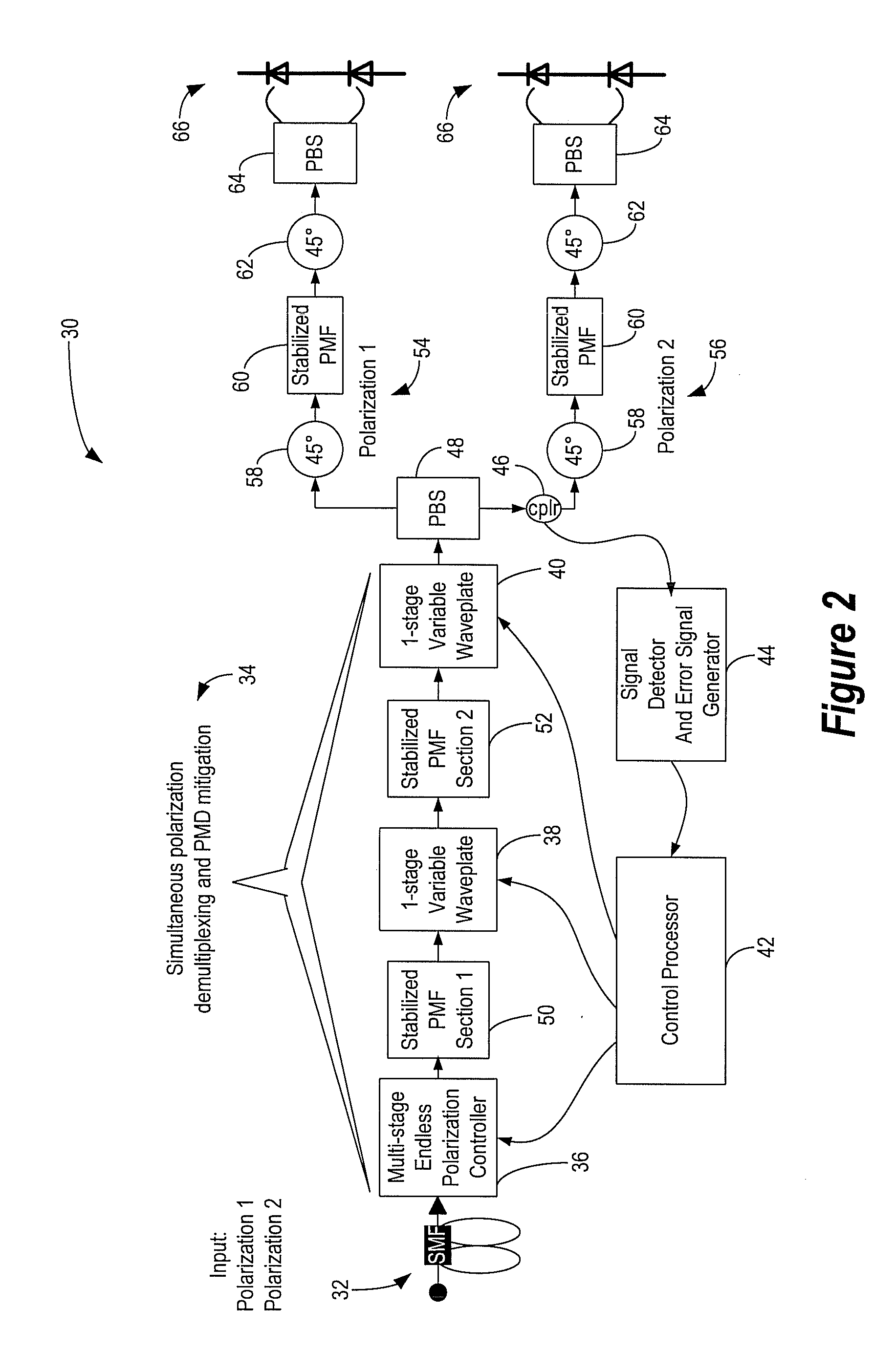Optical receiver systems and methods for polarization demultiplexing, pmd compensation, and dxpsk demodulation
a receiver and optical technology, applied in the field of optical receivers, can solve the problems of limiting the utilization of the overall transmission system in wavelength division multiplexed (wdm) systems, high data rates are being pushed towards ever increasing speeds, and direct binary modulation schemes have poor spectral efficiency, so as to reduce the number of delay line demodulators and reduce the cost
- Summary
- Abstract
- Description
- Claims
- Application Information
AI Technical Summary
Benefits of technology
Problems solved by technology
Method used
Image
Examples
Embodiment Construction
[0024]In various exemplary embodiments, the present invention provides a simplified optical receiver architecture capable of tracking and demultiplexing polarization-multiplexed signals, dynamically compensating for PMD using a variety of polarization controller technologies, and reducing the number of delay line demodulators by two for both DPSK and DQPSK modulation. Once polarization is stabilized at the first stage of the cascaded system of the present invention, subsequent stages can be simplified and cost reduced.
[0025]The present invention stabilizes polarization maintaining fiber (PMF) sections such that phase variations stay well within a single 2π period. Thus, the present invention only requires a single, fully-arbitrary polarization controller, and subsequent controllers can be implemented as single-stage adjustable waveplates with a well-defined axis orientation. Alternatively, the present invention contemplates using crystal-based differential polarization delays or the...
PUM
 Login to View More
Login to View More Abstract
Description
Claims
Application Information
 Login to View More
Login to View More - R&D
- Intellectual Property
- Life Sciences
- Materials
- Tech Scout
- Unparalleled Data Quality
- Higher Quality Content
- 60% Fewer Hallucinations
Browse by: Latest US Patents, China's latest patents, Technical Efficacy Thesaurus, Application Domain, Technology Topic, Popular Technical Reports.
© 2025 PatSnap. All rights reserved.Legal|Privacy policy|Modern Slavery Act Transparency Statement|Sitemap|About US| Contact US: help@patsnap.com



